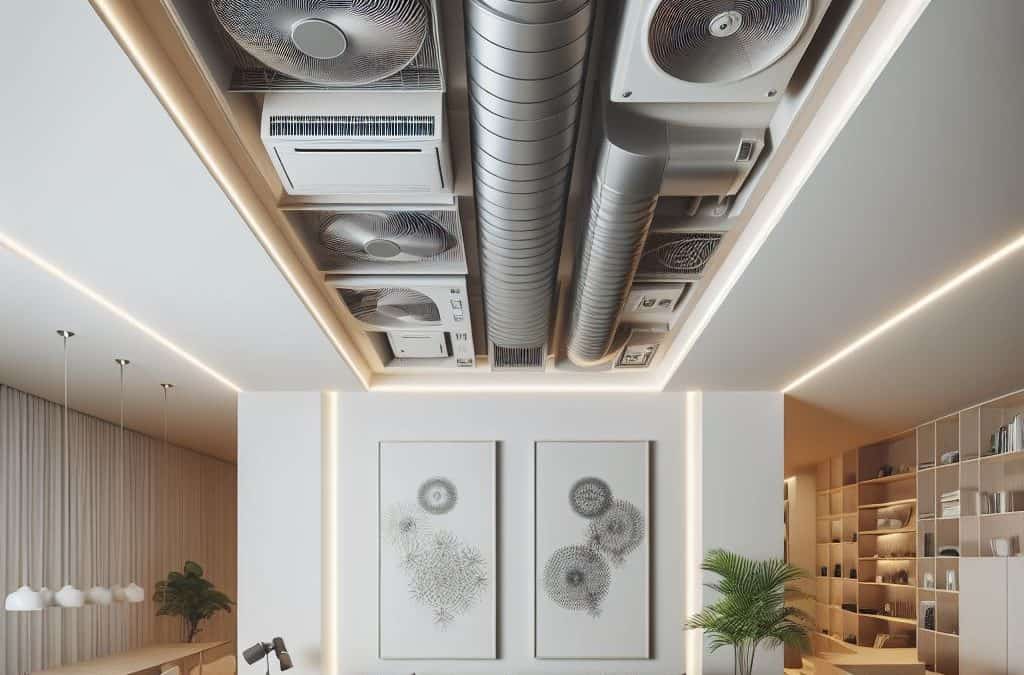Understanding and mastering HVAC ventilation is crucial for maintaining a healthy, comfortable, and energy-efficient home. This comprehensive guide dives into the essentials of HVAC ventilation, offering insights and tips to help you breathe easier in your living spaces.
What is HVAC Ventilation?
HVAC ventilation refers to the process of exchanging indoor air with fresh outdoor air using your home's heating, ventilation, and air conditioning (HVAC) system. Proper ventilation is key to reducing indoor pollutants, managing humidity levels, and ensuring a steady supply of fresh air for a healthier living environment.
The Importance of Proper Ventilation
Good ventilation is essential for several reasons. It helps to remove or dilute indoor airborne pollutants, such as dust, carbon monoxide, and volatile organic compounds (VOCs). Additionally, it plays a crucial role in controlling humidity levels, which can impact both comfort and the structural integrity of your home.
Types of HVAC Ventilation Systems
There are several types of ventilation systems to consider for your home:
Exhaust Ventilation Systems: These systems work by depressurizing your home, using fans to remove air from the house, which helps to reduce the levels of contaminants and moisture.
Supply Ventilation Systems: These systems use a fan to bring fresh air into the home, pressurizing the interior, and forcing out stale air.
Balanced Ventilation Systems: These systems neither pressurize nor depressurize the home but provide a balanced air exchange, making them ideal for newer, more airtight homes.
Energy Recovery Ventilation Systems: These advanced systems provide a controlled way of ventilating a home while minimizing energy loss. They recover energy from the outgoing stale air and transfer it to the incoming fresh air.
Optimizing Your Home’s Ventilation
Optimizing your home's ventilation involves more than just installing the right system. It's about understanding the needs of your home and lifestyle. Here are some tips:
- Regular Maintenance: Regularly check and clean your ventilation system to ensure it's functioning optimally.
- Smart Ventilation Controls: Consider installing smart ventilation controls that adjust airflow based on occupancy or time of day.
- Air Quality Sensors: Use air quality sensors to monitor levels of humidity, VOCs, and particulate matter, adjusting your ventilation accordingly.
- Professional Assessment: Have a professional assess your home’s ventilation needs, especially if you have specific concerns or a unique home layout.
Common HVAC Ventilation Myths Debunked
Let’s address some common myths about HVAC ventilation:
- Myth 1: More ventilation is always better. Reality: Over-ventilation can be as problematic as under-ventilation, leading to energy loss and discomfort.
- Myth 2: Ventilation is only about air quality. Reality: While air quality is a significant factor, proper ventilation also impacts humidity control and energy efficiency.
- Myth 3: Only older homes need additional ventilation. Reality: Even newer, well-sealed homes require proper ventilation to manage indoor air quality.
In conclusion, mastering HVAC ventilation is vital for maintaining a healthy, comfortable, and efficient home. By understanding the types of systems available, their importance, and how to optimize them, you can create a living environment that not only feels good but also supports your wellbeing. Remember, good ventilation is a key component of a healthy home, so invest in it wisely and breathe easy knowing you've made a smart choice for your home's health and comfort.
